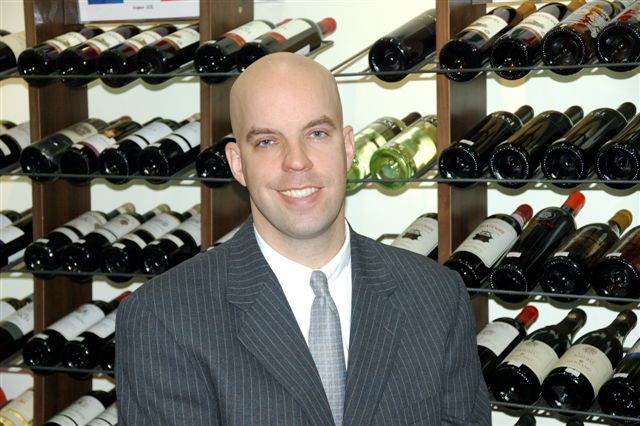By Jim Boyce
Ethan Perk, deputy general manager of Jebsen Fine Wines [Note: Perk is now GM for North China for ASC Fine Wines — Ed, July, 2012], has been in China’s wine sector for six years. I asked him about the wine scene in different regions of China, reaching local consumers, trends in wine consumption, and more.
How does the China wine market differ now as compared to when you arrived?
There is actually a business now. Seriously, for many years, just a few distributors were chasing the same limited pool of customers. But now the market has grown tremendously as the number of end consumers has skyrocketed. Imported wine is now everywhere in China.
What marketing strategies does Jebsen use to reach local consumers?
As opposed to the large spirit and beer brands which advertise on a macro market scale, wine is much more a grassroots marketed item. That means we work from account to account, and try to speak to each individual outlet’s needs.
The type of wine and price point requested by a local Chinese restaurant will be very different from an upscale bar or international restaurant. You have to use different bait to catch different fish.
Jebsen Fine Wines has offices in Hong Kong, Macau, Guangzhou, Shanghai and Beijing. What are the differences in the wine scenes in these five places?
We actually now have offices in seven cities, including Tianjin and Dalian, and all of these markets are incredibly different. On a per person average, south China actually has the highest consumption and knowledge of wine but the customers are also most picky.
North China is a much more traditional market where customers buy by brand more than they do in other regions of China. East China seems to be the most open and experimental of the three regions. But these are quick generalizations.
How does Jebsen see the rest of China’s cities, say Chengdu or Chongqing?
There is good wine business everywhere in China, the skill is in finding the end consumer. We have good local partners in three dozen Chinese cities besides Beijing, Shanghai and Guangzhou. We work with them and draw on their local expertise to make things happen.
What changes can we expect to see in the Jebsen wine portfolio? For example, will the lower US dollar mean more American wines?
In 2007, we added 27 new wine brands, which is not a small number! This year we are looking to further develop these brands through our customers.
Regarding new wines, we are continuing to expand our portfolio with more Grand Cru class and small boutique and niche wines.
The industry faces challenges due to the appreciation of the Australian dollar and the Euro in combination with higher component costs, such as for energy and glass. This has forced prices up across the board. Freight and shipping costs continue to rise as well, which puts stress on costs. Wine suppliers will be forced to increase prices again this year.
Australia for years benefited from a surplus of juice, plus a weak currency. But those days are long over, as Aussie wines have suffered supply challenges from an intense drought and depressed yields.
The price conscious wine consumer could look to US-dollar based wines for 2008, as less expensive alternatives to European or Australian wines. California is doing very well as of late.
You were in Japan’s wine industry before moving to China to work for Montrose and then Jebsen. What brought you to China and what have you learned since you arrived?
I came to China as I believed the potential for wine was huge. It turned out to be a good guess.
This market is similar to Japan and the US in many ways, but different in others. China is an on-premise market with most wines consumed away from home, while the US and some other markets are based upon home consumption. China will move in that direction as more people entertain and dine at home. Just look around Beijing and you can see block after block of new apartments.
But at the end of the day, the consumer wants good value wine, most often from a recognized brand. This is a truism around the world.
When you want to relax and have some wine, where do you go in Beijing?
Where I go really depends on the moment and the group. There are too many good places to go – Aria, Cafe Igosso, Aperitivo, Face, and more. There are also many great places opening up that will continue to help grow the Beijing wine scene.
Grape Wall has no sponsors of advertisers: if you find the content and projects like World Marselan Day worthwhile, please help cover the costs via PayPal, WeChat or Alipay.
Sign up for the free Grape Wall newsletter here. Follow Grape Wall on LinkedIn, Instagram, Facebook and Twitter. And contact Grape Wall via grapewallofchina (at) gmail.com.


Thanks for this very insightful interview.